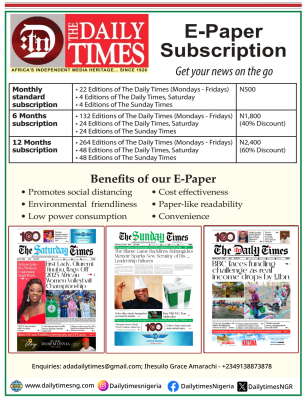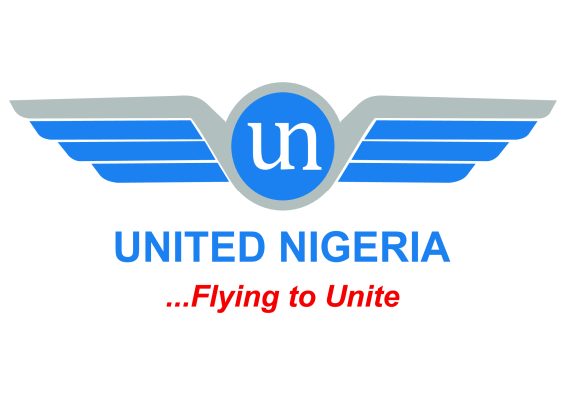Concerns as FG sets to take another $22.7bn loan

.Infrastructure, power highest beneficiaries
.Every Kobo from loan will be accounted for – Minister
Stakeholders have raised concerns with the raising debt profile of the country.
This is coming on the heels of the recent approval by the Nigerian Senate for the Federal Government to borrow another $22.7 billion from different international agencies.

With the current borrowing plan, Nigeria’s debt is now estimated at N33 trillion.
However, a financial expert and Chief Executive Officer of BIC Consulting Services, Dr. Boniface Chizea, said the rate of borrowing by the Federal Government is becoming disturbing as it doesn’t match the development on ground.
“There is no country in the world that does not borrow, even the USA which has the strongest economy also borrows.
“However, there are concerns in the case of Nigeria as the debts keep increasing without commensurate impact.
“For instance, if you’re borrowing and we see improvement in power, rehabilitation of roads, schools, hospitals and other social amenities, nobody will complain, but when you keep borrowing and we have epileptic power, bad roads, unemployment, high inflation kidnapping and banditry, it calls for concern,” he lamented.
Speaking further, Chizea said there must be generational equity in all borrowings to be embarked upon by the Federal Government.
This is because the loans one day must be repaid by someone as a sovereign nation cannot go bankrupt, he said.
He advised the Federal Government to come up with a detailed breakdown of the details of the loan and every project it will be executed on.
“Remember this same loan request was rejected by the 8th Senate due to inadequate information and details, therefore more details should be released on the loan and the execution plan for Nigerians to know,” he added.
Another economist, Bashiru Sunday believes that the projects contained in the loan request are genuine, but questioned the Federal Government’s sincerity in executing them.
He said: “You know our problem in this country is that we have a problem of financial insincerity. We have had many loans taken in the past but those monies were diverted to private individuals, so I hope it won’t be the case this time”.
He also also cautioned on the rate of borrowing by the Buhari administration, saying that “Our debt is now about N33 trillion, so the current administration should slow down borrowings and look inward to generate more revenue”.
The International Monetary Fund (IMF) in December 2019 said that Nigeria’s debt-to-Gross Domestic Product (GDP) ratio, which currently stands at 28 per cent, is still below the average in Africa, despite the fact that the country’s debt level has risen.
It also reiterated that revenue-to-GDP ratio in the country remains low and urged the Federal Government to increase its drive to create more jobs and enhance fiscal consolidation, and reduce the risk of exceedingly debt to GDP rate.
As it stands, Nigeria’s external borrowing accounts for about 32 per cent at N8.22 trillion while 68 per cent at N17.48 trillion is from domestic borrowing, which according to the International Monetary Fund still falls below average.
Earlier before approving the loan request by the Senate last week, the Senate Minority Leader, Senator Eyinanya Abaribe, had raised concerns that the projects to be executed are tied to one section of the country and ignoring others.
He argued that in the interest of the country, items in the loan request should be considered one after the other, the move which was stood down by the Senate president.
“It is not about partisanship Mr. President, but even at that some of our colleagues have complained that the projects are lopsided and tied to one section of the country ignoring the others, but we don’t want to make issues out of that.
“That is why on behalf of my colleagues, we ask that the items on the list be considered one after the other, and not just approve the loan as a whole just like that,” he said.
Reacting to the allegations that the projects were not evenly distributed among the six goe-political zones especially the South East, the special adviser to the Finance minister on Media and Communications, Yunusa Tanko Abdullahi, said the allegations were not true.
Speaking with the Daily Times, he said: “The East-West road and the Second Niger Bridge are all located in the South eastern part of the country, so I don’t understand why people are alleging that the projects are not evenly distributed. Also, I don’t know which part of the country is it that has not been taken into consideration in the projects to be executed from the loan.
“Also, the projects were allocated directly from the Presidency and not the Ministry of Finance, so Ajuri Ngalale, the SA to the president on public affairs, can provide more details”.
In another development, the Minister of Finance, Budget and National Planning, Zainab Ahmed, had earlier allayed any fear of misappropriation of the funds which will come from the loan.
She said: “These loans are tied to projects that will impact Nigerians directly, therefore every Kobo to be spent will be accounted for and will reflect in the development of the country”.
Ahmed added that the loans had very low interest rates over a long period of time, which is why the Federal Government felt the need to go for them.
According to her, the Federal Government is putting measures to ensure strategic and efficient implementating of the projects when the loan is eventually secured.
Power, Infrastructure take largest share
A breakdown of the loan by the Daily Times shows that power and infrastructure is expected to gulp about $16 billion of the total loan of $22.7bn.
Under infrastructure, Lagos-Kano rail is expected to gulp $5.3bn while Calabar-Port Harcourt Onne deep seaport rail has $3.47bn earmarked.
Similarly, Abuja rail transit has $1.25bn, Abuja water supply has $381m, just as Northeast restoration has $300m while road rehabilitation takes $437.7m.
In the power sector, the Federal Government has set $4.8bn for the Mambilla power project, just as $614m is set to be spent on electricity projects and training, while Ogun/Lagos power transmission will consume $200m.
On the items that will affect the economy, the Federal Government prioritised the Micro, Small, and Medium Enterprises as it has budgeted $1.28bn for the sector.
Also, development finance projects is set to take $970m from the project while agriculture and mining industry is set to claim $800m and $150m respectively.
In the area of social investment, the Federal Government intends to spend $500m on social welfare while education for all is expected to also take $500m.
NTA digitalization is expected to gulp $500m while ICT infrastructure has $328.1m under Communications sector.
Subsequently, the sources of the loan include the China-Exim Bank which is largely funding the loan with $17.065bn, and closely followed by the World Bank with $2.854bn.
The African Development Bank will provide $1.888bn of the loan while the French Development Bank will give $480m.
Similarly, Japan International Corporation Agency (JICA) and the German Development Bank is expected to fund the budget with $200m each, while the Islamic Development Bank is set to give $110m.








